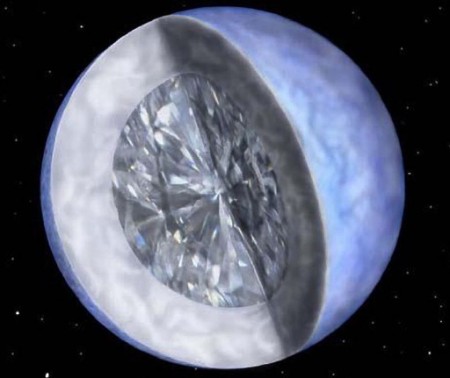Galaxy Full Of Diamond Planets? Cosmic Blood Bling.
The universe revels in its ability to put the mind-boggling and wonderful just within our reach. We can see it, perceive it, never touch at. At least not yet. I mean fuck, the cruelty! Who wouldn’t want to get to a galaxy full of diamond planets?
io9:
A few months back, astronomers discovered a diamond planet formed from the remnants of an exploded star. It looked like a cosmic oddity, but giant diamond-encrusted planets might be way more common than we ever suspected.
The composition of planets is really just a reflection of what materials were around when their solar system formed. For instance, Earth’s core is mostly iron, while the mantle is high in silicon, because those two elements were abundant in the primordial solar system. But there’s no requirement that those two elements need to be around for a solar system to form. Instead, what if a solar system was dominated by carbon?
Researchers at Ohio State pondered that question, and they came to startling but straightforward conclusion: the rocky planets in such a solar system could be up to fifteen times as massive as Earth, and their composition could be as much as 50% pure diamond. Earth sciences professor Wendy Panero explains:
“Our results are striking, in that they suggest carbon-rich planets can form with a core and a mantle, just as Earth did. However, the cores would likely be very carbon-rich – much like steel – and the mantle would also be dominated by carbon, much in the form of diamond.”
While such planets could form quite easily, they most likely could never support life. That’s because of the differences in how the Earth’s interior transfers heat compared to a theoretical diamond planet. Whereas iron and silicon trap heat inside our planet, resulting in geothermal energy, diamonds transfer heat so readily that the planet’s interior would quickly freeze. Without geothermal energy, there couldn’t be any plate tectonics, magnetic field, or atmosphere. Panero describes these diamond super-earths as “very cold, dark” worlds.




